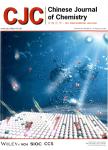Synthesis of 4-(2-Phenylhydrazono)-l-(4-phenylthiazol-2-yl)- 1H-pyrazol-5(4H)-one Compounds and Characterization of Their Affinities to Anti-apoptotic Bcl-2 Family Proteins
Synthesis of 4-(2-Phenylhydrazono)-l-(4-phenylthiazol-2-yl)- 1H-pyrazol-5(4H)-one Compounds and Characterization of Their Affinities to Anti-apoptotic Bcl-2 Family Proteins作者机构:State Key Laboratory of Bioorganic and Natural Products Chemistry Shanghai Institute of Organic Chemistry Chinese Academy of Sciences Shanghai 200032 China
出 版 物:《Chinese Journal of Chemistry》 (中国化学(英文版))
年 卷 期:2013年第31卷第9期
页 面:1133-1138页
核心收录:
学科分类:0710[理学-生物学] 081704[工学-应用化学] 07[理学] 08[工学] 0817[工学-化学工程与技术] 071009[理学-细胞生物学] 09[农学] 070303[理学-有机化学] 0703[理学-化学] 0901[农学-作物学] 090102[农学-作物遗传育种]
基 金:The authors are grateful to the financial supports from the Chinese National Natural Science Foundation the Chinese Ministry of Science and Technology the Chinese Academy of Sciences
主 题:apoptosis inducer BAX activation Bcl-2 inhibition protein-protein interaction small-molecule in-hibitor
摘 要:Organic compounds containing the thiazol-2-yl-lH-pyrazol-5(4H)-one moiety are known to be associated with versatile pharmacological applications. In this study, we describe the methods for preparing 4-(2-phenylhydrazono)- l-(4-phenylthiazol-2-yl)-1H-pyrazol-5(4H)-one compounds. A set of 26 compounds were synthesized with overall yields ranging between 37%-92%. They were tested in a fluorescence polarization-based binding assay against three anti-apoptotic Bcl-2 family proteins, including Bcl-xL, Bcl-2, and Mcl-1. Our results indicate that this class of compounds are not effective inhibitors of these anti-apoptotic Bcl-2 family proteins. Their apoptosis-inducing ef- fects are possibly due to BAX activation as suggested by Gavathiotis et al. in their recent study. However, other possibilities should not be ignored. In addition, a crystal structure obtained by us reveals that the exocyclic double bond in the molecular structure of this class of compounds is in the (Z)-configuration.



